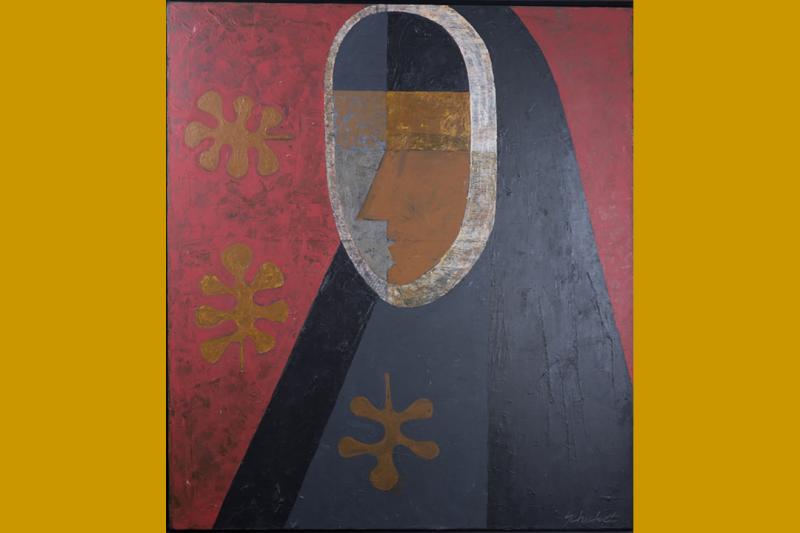
Grace and Grit: Mysticism and the Cross
Can a painting shout and whisper? This one does. It shouts of grace and grit; it whispers about the cross.
The starkness of the black and white habit, the angular, almost ugly face expresses the austerity that characterized Philippine. Yet there is a softness that speaks, too. I think the quality communicated is grit. Her beatification process spoke of Philippine's "severe mortification" with all that connotes of Jansenism and masochism. The woman in this painting has all the grit and determination needed to follow through on her vision yet does not seem centered on self as the Jansenist and masochist must be. All through her life she had the grit to do what needed doing no matter what the cost. It was what needed doing that called forth that self-denying strength we identify with her. The painting has a mystical quality. The almost bizarre stance of the head - simultaneously facing in and out of the bonnet - says "the 'within' and 'without' are one." It is hard to tell which way she faces. The impression is of a woman worldly-wise and other-worldly. It is not hard to imagine her as "the woman who prays always."
The painting has a subtle message about the cross. Actually, there is no cross on this habit. Where it would be, over the heart, hangs an oak leaf. Muted in color and size, this "cross" does not focus our attention. Whether the artist intended it or not, I don't know, but this treatment speaks to me. The cross is an oak leaf. In French, of course, Duchesne means "of oak." The message is that her very self was her cross - as is the case, I suspect, with most of us. There is a subtle peace about this oak leaf over her heart. There is nothing startling about there being a leaf where a cross should be. The painting whispers a message to me. Accepting a nature - with all the flaws and flamboyance we know to be Philippine's - has transformed the very core of her being into both the heart and cross of Christ.
Nance O'Neil, RSCJ, Area of IndonesiaImage: William Schickel



